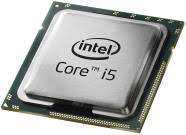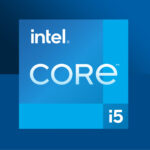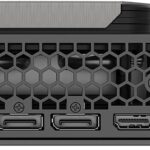The Intel Core i5-8600 processor offers solid performance for everyday computing tasks and light gaming. Released as part of Intel’s 8th generation Coffee Lake lineup, this CPU features 6 cores and 6 threads with a base clock speed of 3.10 GHz. The processor can reach up to 4.30 GHz with Intel’s Turbo Boost Technology 2.0, making it capable of handling more demanding applications when needed.
This CPU includes 9MB of cache and is compatible only with motherboards based on Intel 300 Series chipsets. While it’s considered an older processor by today’s standards, the i5-8600 still provides reliable performance for many users who don’t require the latest cutting-edge technology.
When paired with a decent graphics card, this processor can handle most games and productivity applications with ease. It represents a good balance between performance and value for users who aren’t running extremely CPU-intensive workloads.

Intel Core i5-8600 @ 3.10GHz: Performance Review in 2025
The Intel Core i5-8600, originally launched in Q4 2017 as part of Intel’s 8th Gen Coffee Lake lineup, was a solid mid-range performer in its heyday. Now in 2025, the landscape has shifted dramatically—but does the i5-8600 still have a place in modern systems? Here’s a look at how it stacks up in today’s performance climate.
✅ Quick Specs Recap
- Base Clock: 3.10 GHz
- Boost Clock: Up to 4.30 GHz
- Cores / Threads: 6 Cores / 6 Threads
- Lithography: 14nm++
- TDP: 65W
- Socket: LGA1151
- Integrated Graphics: Intel UHD Graphics 630
🧪 2025 Performance Snapshot
| Task Type | Performance (2025 Context) |
|---|---|
| Web Browsing | ✅ Smooth, no noticeable slowdowns |
| Office Work | ✅ Adequate for Excel, Word, etc. |
| 1080p Gaming | ⚠️ Bottlenecks newer GPUs slightly |
| Video Editing (4K) | ❌ Struggles – lacks multithreading |
| Multitasking / Streaming | ⚠️ Limited by 6-thread architecture |
| AI/ML Workloads | ❌ Not suitable |
While it’s still capable for basic tasks and light gaming, its lack of hyper-threading and aging architecture show in multitasking and demanding workloads. In GPU-bound games or productivity tasks, it simply can’t keep up with modern expectations.
🎮 Gaming in 2025: Can It Still Deliver?
Yes—with limitations. The i5-8600 paired with a mid-range GPU like a GTX 1660 Super or even an RTX 2060 can still handle many 1080p titles at medium to high settings. However, in CPU-intensive games like Cities: Skylines II, Baldur’s Gate 3, or Starfield, frame dips and stutters are common, especially when background processes pile up.
You’ll also feel the pinch in newer esports titles pushing higher refresh rates. With only 6 threads, it doesn’t take much to overwhelm this CPU in 2025 multiplayer environments.
🔧 Upgradability and Compatibility
One major limitation is the platform itself. The i5-8600 uses the LGA1151 socket, which is stuck with DDR4 memory and lacks support for PCIe 4.0 or 5.0. Motherboard chipsets compatible with this CPU (like Z370 or B360) are also outdated, meaning any upgrade path will likely involve a full platform switch—CPU, motherboard, and RAM.
🔍 Real-World Use Cases in 2025
- Good For:
- Budget secondary PCs
- HTPCs (Home Theater PCs)
- Kids’ or student computers
- Retro gaming setups
- Not Recommended For:
- Modern AAA gaming builds
- Creative professionals (editing, design)
- Heavy multitasking or streaming
- Developers or AI-based workloads
🔚 Final Verdict
The Intel Core i5-8600 has aged better than some of its contemporaries, thanks to its decent single-threaded performance and higher boost clock. But in 2025, it’s clear that it’s past its prime. It can still hold its own in entry-level builds and non-demanding environments, but for anyone looking to keep pace with modern software and games, it’s time to consider an upgrade—especially with budget-friendly AMD Ryzen 5 5600 or Intel Core i5-12400 options now widely available.
Key Takeaways
- The Intel Core i5-8600 features 6 cores with a 3.10 GHz base clock and 4.30 GHz max turbo frequency.
- This processor requires an Intel 300 Series chipset motherboard for compatibility.
- Though older, the i5-8600 still delivers adequate performance for everyday computing and moderate gaming.
Processor Specifications
The Intel Core i5-8600 is a 6-core processor built on Intel’s Coffee Lake architecture. It delivers solid performance for mainstream computing with a good balance between power efficiency and processing capability.
Core Details
The i5-8600 features 6 physical cores without hyperthreading, meaning it runs 6 threads simultaneously. This represents an improvement over previous generation i5 processors that typically offered only 4 cores.
The processor belongs to Intel’s 8th generation Coffee Lake family and uses a 14nm manufacturing process. It supports 64-bit computing, enabling access to more than 4GB of system memory.
The chip includes essential instruction set extensions like SSE4.1/4.2 and AVX2. It also incorporates AES hardware acceleration for improved encryption and decryption performance.
Performance
The i5-8600 operates at a base frequency of 3.10 GHz with Intel Turbo Boost Technology 2.0 allowing it to reach up to 4.30 GHz on single-core workloads. This dynamic frequency scaling helps optimize performance based on workload demands.
The processor delivers strong single-threaded performance for everyday tasks like web browsing and office applications. Its multi-core capabilities handle more demanding workloads such as content creation and multitasking.
Performance metrics include:
- Base Frequency: 3.10 GHz
- Max Turbo Frequency: 4.30 GHz
- Threads: 6
- Bus Speed: 8 GT/s
Cache Architecture
The i5-8600 is equipped with 9MB of Intel Smart Cache (L3 cache). This shared last-level cache is accessible by all cores and helps reduce latency when accessing frequently used data.
The cache hierarchy also includes dedicated L1 and L2 caches for each core. This multi-level cache architecture significantly improves processing efficiency by reducing the time needed to access data from main memory.
Cache memory operates at processor speed, making it much faster than accessing data from RAM. The generous 9MB L3 cache helps the i5-8600 maintain good performance across a variety of workloads.
Thermal Management
The i5-8600 has a Thermal Design Power (TDP) of 65W, indicating its heat generation under maximum theoretical load. This moderate TDP makes it suitable for mainstream desktop systems with standard cooling solutions.
The processor includes various thermal management features to prevent overheating. These include thermal sensors and Intel’s Thermal Monitoring technologies that can adjust performance to maintain safe operating temperatures.
The chip supports Intel’s SpeedStep technology, which reduces power consumption by dynamically adjusting voltage and frequency. For optimal performance, an adequate cooling solution is recommended, though the stock Intel cooler is sufficient for standard usage.
Technological Advancements
The Intel Core i5-8600 processor incorporates several key technological innovations that enhance its performance and efficiency. Based on the Coffee Lake microarchitecture, this processor brings improvements in both hardware capabilities and software compatibility.
Instruction Sets
The i5-8600 supports an impressive array of instruction sets that enable efficient computing. It includes advanced vector extensions such as AVX and AVX2, which significantly improve performance for floating-point calculations and multimedia applications. For developers working with complex mathematical operations, the processor offers FMA3 (Fused Multiply-Add) instructions that complete multiple calculations in a single step.
The processor also supports legacy instruction sets like MMX, SSE, SSE2, SSE3, and SSE4, ensuring backward compatibility with older software. F16C instructions allow for quick conversion between half-precision and single-precision floating-point formats, which is valuable for graphics and machine learning workloads.
Integrated Technologies
The i5-8600 features Intel UHD Graphics 630 as its integrated GPU, providing decent visual performance without a dedicated graphics card. This integrated solution handles everyday computing tasks and basic media consumption effectively.
The processor includes virtualization technology that enables efficient running of virtual machines. Enhanced SpeedStep technology dynamically adjusts the processor’s voltage and frequency to optimize power consumption based on workload demands.
The Coffee Lake architecture brings improvements to the cache system, with 9MB of Intel Smart Cache that reduces data access times. With a base TDP of 65W, the chip offers a good balance between performance and energy efficiency.
Compatibility and Upgrades
The Intel Core i5-8600 processor offers solid compatibility with a range of hardware components and provides several upgrade paths for users looking to extend their system’s lifespan. Understanding these options helps maximize the potential of this Coffee Lake-S CPU.
Supported Motherboards
The i5-8600 uses the LGA1151 socket (Socket 1151), but requires specific compatibility with 300-series chipsets. This is an important distinction, as not all LGA1151 motherboards will work with this processor.
Compatible motherboards include those with Intel Z370, H370, B360, and H310 chipsets. The Z370 boards offer the most features, including overclocking support for K-series CPUs (though the standard i5-8600 is not unlocked).
When selecting a motherboard, consider your needs for USB ports, PCIe lanes, and other connectivity options. Most 300-series motherboards provide sufficient features for gaming and productivity tasks.
Memory and Graphics Compatibility
The i5-8600 supports dual-channel DDR4 memory with speeds up to 2666MHz. Using RAM at this speed will provide optimal performance without needing to overclock.
Users can install higher-speed memory (3000MHz+), but it will typically run at the 2666MHz specification unless manually configured. The processor supports up to 64GB of RAM across two channels.
For graphics, the i5-8600 includes Intel UHD Graphics 630 integrated GPU, sufficient for basic display needs and light gaming. Most users pair this CPU with a dedicated graphics card for better performance in games and graphics-intensive applications.
Upgrade Potential
The i5-8600 offers several upgrade paths without changing the motherboard. Moving to an i7-8700 or i7-8700K would provide two additional cores and higher thread count, beneficial for multitasking and CPU-intensive applications.
For maximum performance, the i9-9900K offers 8 cores and 16 threads, potentially delivering up to 15% better performance with boost speeds reaching 5GHz. This represents the highest-tier upgrade option on the same socket.
Consider cooling solutions when upgrading, as higher-tier CPUs generate more heat. Stock coolers may prove insufficient for i7 or i9 processors under heavy loads.
Memory upgrades are also possible – adding more RAM or replacing with faster modules can improve system responsiveness and multitasking capabilities in some scenarios.
Purchasing and Support
When buying the Intel Core i5-8600 processor, consumers have several options for purchase channels and post-sale support. Intel offers comprehensive warranty coverage and technical assistance for this 3.1 GHz desktop processor.
Availability and Ordering
The Intel Core i5-8600 (product code BX80684I58600) is widely available through authorized retailers, computer stores, and online marketplaces. Many sellers offer free shipping on orders exceeding $100 in value.
Customers can purchase directly from Intel.com or through trusted electronics retailers. Payment options typically include major credit cards such as Visa, Mastercard, Amex, and Discover. Some retailers also offer military discounts.
Shipping services vary by retailer but commonly include DHL, FedEx, and UPS. When ordering, verify the processor is compatible with your motherboard, which must be based on Intel 300 Series Chipsets.
Warranty and Support
Intel provides a standard three-year limited warranty for the Core i5-8600 processor when purchased new from authorized sellers. This warranty covers manufacturing defects but not damage from improper installation or overclocking.
Technical support is available through Intel’s customer service channels. The support team can assist with installation issues, compatibility questions, and troubleshooting performance problems.
For specialized assistance, Intel offers technical sales representatives who can provide guidance on comparing the i5-8600 with other processors like the Core i9 series. Contact information is available on Intel.com under the Support section.
Many retailers also offer extended warranty options and return policies worth considering when making your purchase.
Frequently Asked Questions
The Intel Core i5-8600 processor offers solid performance for both everyday computing and more demanding tasks. Users often have specific questions about its capabilities, compatibility, and value proposition.
What are the specifications for the Intel Core i5-8600 processor?
The Intel Core i5-8600 features 6 cores and 6 threads with a base clock speed of 3.10 GHz. It can reach up to 4.30 GHz with Max Turbo Frequency.
The processor includes 9 MB of cache and is only compatible with motherboards based on Intel 300 Series Chipsets. This CPU does not include integrated graphics.
The i5-8600 uses Intel’s 14nm manufacturing process and has a TDP (Thermal Design Power) of 65W, making it relatively power-efficient for its performance class.
How does the Intel Core i5-8600 perform in benchmark tests?
The Intel Core i5-8600 shows excellent benchmark results, averaging only 11.8% lower than peak scores from group leaders in its category. This indicates strong overall performance.
In real-world applications, the six physical cores provide good multitasking capabilities for productivity tasks like video editing, programming, and content creation.
When compared to newer processors like the i7-11370H, benchmarks help users understand performance differences across generations and determine if an upgrade would be worthwhile.
What is the estimated price range for the Intel Core i5-8600?
The Intel Core i5-8600 typically ranges from $180-230 when purchased new, though prices have fluctuated since its release. On the secondary market, used chips can be found for significantly less.
Pricing depends on availability, as this processor is no longer in production. Regional differences and retailer promotions can affect the final cost.
For which generation does the Intel i5-8600 belong?
The Intel Core i5-8600 belongs to the 8th generation of Intel Core processors, also known as Coffee Lake. This generation was a significant step up from previous offerings.
The 8th generation introduced more cores at similar price points compared to the 7th generation Kaby Lake processors. Coffee Lake CPUs require 300-series chipset motherboards.
Can the Intel Core i5-8600 provide a satisfactory gaming experience?
The Intel Core i5-8600 provides a good gaming experience, especially when paired with a dedicated graphics card. Its 6 cores and turbo boost up to 4.3 GHz handle most modern games well.
For competitive or AAA gaming titles released around 2023-2025, users might notice limitations compared to newer processors. However, the i5-8600 still performs adequately for many popular games.
E-sports titles and less demanding games will run smoothly on systems built around this processor, making it suitable for casual to moderate gamers.
When was the Intel i5-8600 processor originally released?
The Intel Core i5-8600 was released in Q4 2017 as part of Intel’s Coffee Lake lineup. It represented a mid-range option for desktop computing needs at that time.
The processor was launched alongside other 8th generation desktop CPUs, offering increased core counts compared to previous generations while maintaining similar price points.







